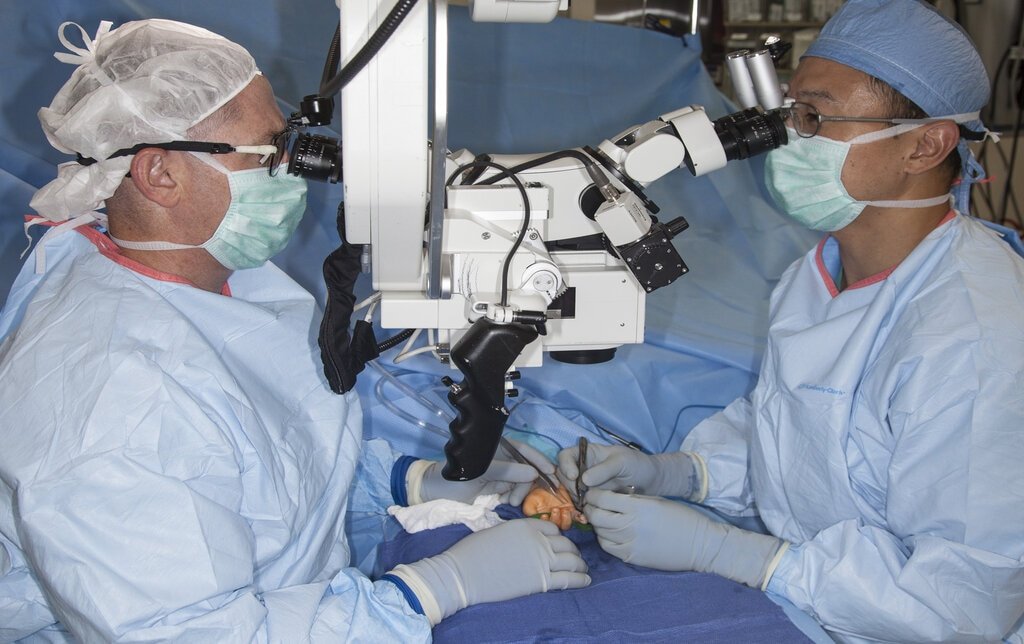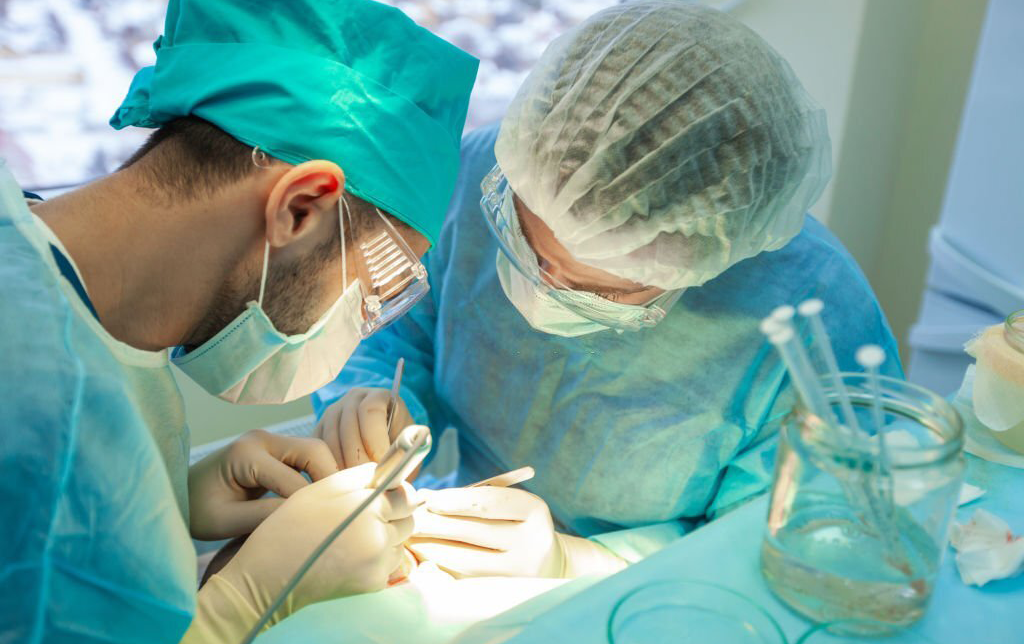Blogs

Exploring Microvascular Surgery for Penis Enlargement: Techniques, Benefits, and Considerations
Breast reconstruction is a vital aspect of recovery for many women following a mastectomy or breast-conserving s
Penis enlargement, or male enhancement, is a topic that has captivated many, with a variety of methods available to those seeking to increase the size of their penis. While non-surgical options like supplements, ointments, and mechanical devices are commonly discussed, microvascular surgery presents a potential solution for those looking for permanent and effective results. This blog delves into the nuances of microvascular surgery for penis enlargement, exploring its techniques, benefits, risks, and considerations.
Understanding Penis Enlargement
Penis enlargement aims to augment the size and dimensions of the penis, which can involve increasing length, girth, or glans size. Various methods are available, ranging from non-surgical approaches like pills and pumps to surgical interventions. Microvascular surgery stands out as a surgical option for permanent enhancement, offering precise and lasting results.
Surgical Approach: Microvascular Surgery
Microvascular surgery, or microsurgery, involves intricate techniques performed under a microscope to manipulate tiny blood vessels and tissues. For penis enlargement, this surgery focuses on enhancing penile length and girth through tissue grafts or implants. The precision of microvascular surgery ensures that the enhancements are both functional and aesthetically pleasing.
Techniques of Microvascular Surgery for Penis Enlargement
Microvascular surgery includes several advanced techniques tailored to the patient’s specific needs and anatomical considerations:
- Dermal Fat Grafting: This technique involves harvesting fat from donor sites (such as the abdomen or thighs), processing it, and injecting it into the penile shaft to increase girth. The microsurgical approach ensures proper vascularization of the graft, promoting long-term integration and survival.
- Allograft Implants: Allografts, or tissue grafts from cadaveric donors, can be used to enhance penile length or girth. These implants are carefully sculpted and secured using microvascular techniques, providing durable and natural-looking results.
- Ligamentolysis: This technique involves partially releasing the suspensory ligament of the penis, which attaches it to the pubic bone. By using microsurgical techniques, the ligament can be released with precision, increasing visible length while preserving neurovascular structures and maintaining erectile function.
Benefits of Microvascular Surgery for Penis Enlargement
Microvascular surgery offers several distinct advantages over non-surgical methods and traditional surgical approaches:
– Permanent Results: Unlike temporary methods such as pumps or traction devices, microvascular surgery provides a permanent enhancement, allowing individuals to enjoy long-lasting results without ongoing maintenance.
– Natural Appearance: The precision of microsurgical techniques ensures that the augmentation appears natural and blends seamlessly with surrounding tissues, while maintaining penile sensation and function.
– Customization: Surgeons can tailor the procedure to each patient’s anatomical features and aesthetic goals, selecting appropriate grafts or implants and shaping them for optimal outcomes.
– Minimal Scarring: Due to smaller incisions and meticulous tissue handling, microvascular surgery is associated with minimal scarring compared to traditional open surgeries, enhancing both aesthetic outcomes and recovery time.
Risks and Considerations
While microvascular surgery offers promising benefits, it is important to consider potential risks:
– Infection: As with any surgery, there is a risk of infection at the surgical site. Proper sterile techniques, perioperative antibiotics, and diligent wound care can help reduce this risk.
– Hematoma or Seroma: The accumulation of blood (hematoma) or fluid (seroma) at the surgical site may occur. Drainage tubes may be used to prevent fluid buildup and promote healing.
– Tissue Necrosis: Inadequate blood supply to grafts or implants can result in tissue necrosis. Careful surgical technique and postoperative monitoring are crucial to minimize this risk.
– Functional Compromise: Manipulation of penile tissues and nerves can potentially affect erectile function or sensation. Surgeons must prioritize the preservation of erectile nerves and blood supply to maintain function.
Microvascular surgery represents a sophisticated approach to penis enlargement, offering permanent results with natural-looking outcomes and minimal scarring. By leveraging the precision of microsurgical techniques, skilled surgeons can provide tailored solutions to meet individual needs and goals. While there are risks associated with the procedure, careful planning, patient selection, and postoperative care can optimize results and ensure a successful enhancement experience.
urgery due to breast cancer. The significance of breasts extends beyond their physical presence; they are deeply intertwined with femininity, self-perception, and psychological well-being. This blog explores the aims, types, and considerations involved in breast reconstruction, highlighting its role in restoring both physical appearance and emotional health.
Understanding the Importance of Breast Reconstruction
Breasts are not just a physical characteristic but a profound symbol of femininity and identity. Following breast cancer surgery, whether a mastectomy or breast-conserving procedure, the physical and psychological impacts can be substantial. Breast reconstruction plays a crucial role in helping women regain their sense of wholeness and femininity. It aims to recreate a breast that looks natural and is in harmony with the patient’s body, which can significantly enhance self-esteem and body image.
Aims of Breast Reconstruction
The primary goal of breast reconstruction is to achieve symmetry and a natural appearance. The process is not focused on a specific shape or volume but on creating breasts that complement the patient’s overall body. Achieving a symmetrical ptotic conus—an aesthetically pleasing and natural shape—on the breast footprint is a key objective. This artful approach ensures that the reconstructed breast appears as natural as possible, thereby improving the patient’s body image and emotional well-being.
Indications for Breast Reconstruction
Breast reconstruction is indicated in various scenarios:
- Mastectomy for Breast Cancer: After the complete removal of breast tissue due to cancer, reconstruction helps restore the breast’s appearance and enhance the patient’s sense of normalcy.
- Breast-Conserving Surgery for Breast Cancer: Procedures like lumpectomy or segmental mastectomy involve removing only the tumor and some surrounding tissue. Reconstruction can address any resulting deformities and improve the overall appearance of the breast.
Timing of Breast Reconstruction
Breast reconstruction can be performed at different times relative to cancer treatment:
– Delayed Reconstruction: This approach involves waiting until all cancer treatments, such as chemotherapy and radiotherapy, are completed. Benefits include:
– Certainty About Cancer Clearance: Ensuring that the cancer is fully treated before proceeding with reconstruction.
– Completion of Adjuvant Therapy: Allowing the patient to finish necessary treatments that could impact the reconstructed breast.
– Adjustment Period: Providing time for the patient to adapt to life without a breast and consider reconstructive options.
– Less Surgical Time: Avoiding the extensive surgery of mastectomy and reconstruction in one session.
– Consideration Time: Allowing for thorough evaluation of reconstructive options and their risks.
– Primary Reconstruction: Also known as immediate reconstruction, this is performed during the mastectomy. It offers:
– One-Stage Procedure: Reconstruction when much of the breast skin envelope and inframammary fold (IMF) can be preserved.
– Psychological Benefits: Helping to mitigate the emotional impact of mastectomy by avoiding a period without a breast.
– Immediate Delayed Reconstruction: This hybrid approach involves placing an expander during the mastectomy to maintain a subcutaneous cavity for future implant or tissue reconstruction. It is suitable for patients who may require additional therapy like radiotherapy.
Types of Breast Reconstruction
Breast reconstruction can be broadly categorized into three main types:
- Autologous Tissue Reconstruction: Uses the patient’s own tissue, taken from other body parts, to reconstruct the breast. Common techniques include:
– Latissimus Dorsi Flap: Uses muscle, skin, and fat from the upper back.
– TRAM Flap (Transverse Rectus Abdominis Myocutaneous Flap): Utilizes tissue from the lower abdomen.
– DIEP Flap (Deep Inferior Epigastric Artery Perforator Flap): Uses skin and fat from the lower abdomen while preserving abdominal muscle.
– SGAP Flap (Superior Gluteal Artery Perforator Flap) and IGAP Flap (Inferior Gluteal Artery Perforator Flap): Uses tissue from the buttocks.
– TUG Flap (Transverse Upper Gracilis Flap): Uses tissue from the inner thigh.
- Implant-Based Reconstruction: Involves the use of silicone or saline implants to recreate the breast mound. This method is less invasive and typically involves a shorter recovery time.
- Combination of Autologous Tissue and Implants: Combines both techniques to achieve the desired breast shape and volume, often used when there is insufficient tissue from one site alone.
Flap Options for Breast Reconstruction
Specific flaps used in autologous tissue reconstruction include:
– Latissimus Dorsi Flap: Reliable but may cause back muscle weakness.
– Pedicled TRAM Flap: Provides a large amount of tissue but can weaken the abdominal wall.
– Free TRAM Flap: Similar to the pedicled TRAM flap but uses microsurgery to reconnect blood vessels, reducing abdominal wall weakness.
– DIEP Flap: Spares the muscle, offering a natural look but requires intricate microsurgery.
– SGAP and IGAP Flaps: Useful for patients lacking abdominal tissue, though more technically demanding.
– TUG Flap: Provides good contour and texture from the inner thigh.
Complications of Breast Reconstruction
As with any surgery, breast reconstruction carries potential risks:
– Blood Loss: Significant bleeding may occur, requiring transfusions or additional interventions.
– Infection: Surgical site infections can delay healing.
– Necrosis: Death of tissue due to inadequate blood supply, particularly in flap procedures.
– Hematoma: Accumulation of blood requiring drainage.
– Seroma: Fluid collection at the surgical site, often needing drainage.
Breast reconstruction is a sophisticated and essential procedure aimed at restoring the breast’s appearance after mastectomy or breast-conserving surgery. It plays a critical role in the emotional and psychological recovery of breast cancer patients by reestablishing a sense of femininity and body integrity. With options ranging from autologous tissue reconstruction to implants and combinations thereof, each patient can find a tailored solution that best suits her needs and preferences. Despite the risks, advancements in reconstructive techniques offer hope and improved outcomes for many women facing breast cancer.
Popular Posts

Nose Surgery (Rhinoplasty)
Nose reshaping (rhinoplasty or a "nose job") is an operation to change the shape or size of the nose...

Best Hair Transplant Doctor In Nagpur Location
Saundarya City Uses Modern techniques have enabled advanced methods for surgical hair transplants that can help restore lost hair...



 Book an Appointment
Book an Appointment